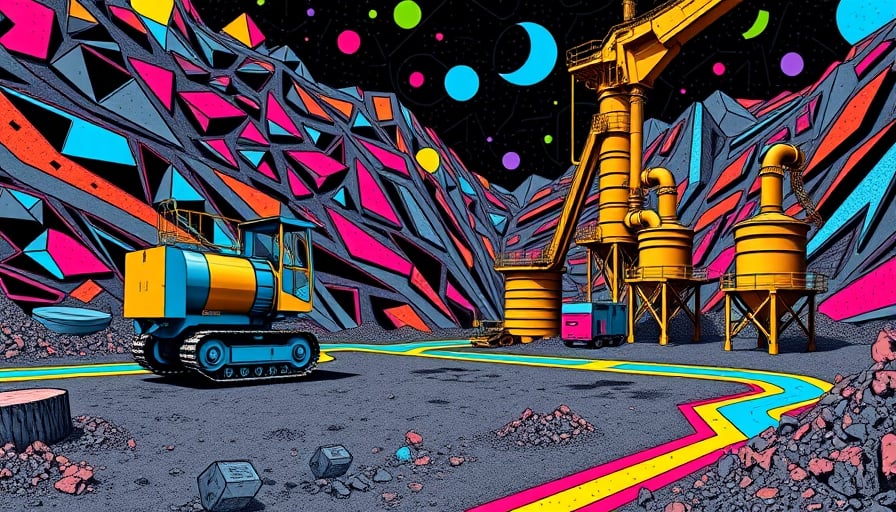St George Mining Ltd. expands its Brazilian footprint while reporting robust drilling results
St George Mining Ltd. (ASX: SGQ) has announced a series of strategic developments that underscore its ambition to establish a leading presence in the rare‑earths sector. The Australian‑listed company, which specializes in gold and nickel exploration and owns the Araxá rare‑earths and niobium project in Minas Gerais, Brazil, has reported a strong drilling program, an expansion of its in‑country advisory team, and a routine disclosure of director‑interest changes.
A high‑profile appointment strengthens Araxá’s stakeholder engagement
On 3 November 2025, St George released an announcement that Marina Spinola, an experienced business leader from Brazil, will join the company as an Advisor to its Board. Spinola’s background includes more than 25 years of leadership in corporate strategy for sustainability, social development, and institutional relations. She currently serves as Executive Director for Institutional Relations and Sustainability at the Dom Cabral Foundation, Brazil’s top business school, which is ranked fourth globally by the Financial Times.
Spinola’s arrival follows the company’s recent success in engaging local stakeholders and demonstrates St George’s commitment to responsible development of Araxá. “The addition of Ms Spinola to our advisory board will reinforce our ability to manage stakeholder relations and sustainability initiatives in Brazil,” the company said. “Her expertise will help us deliver on the promise of a safe, sustainable development of the 100‑owned, world‑class Araxá project.”
The company’s statement highlighted that the Araxá project is “the largest and highest‑grade carbonatite‑hosted REE deposit in South America,” and that Spinola will work closely with other in‑country advisors and management to support the project’s progression.
Outstanding drilling results reinforce Araxá’s resource potential
In a quarterly activities report dated 31 October 2025, St George detailed the outcomes of its reverse‑circulation (RC) drilling program at Araxá. The results were described as “exceptional,” confirming high‑grade mineralisation from surface. Key highlights include:
| Interval | Grade (TREO) | Grade (Nb₂O₅) |
|---|---|---|
| 41 m @ surface | 4.52 % | 0.87 % |
| 13 m @ surface | 7.0 % | 1.3 % |
| 7 m @ surface | 6.5 % | 1.2 % |
The first seven RC drill holes revealed thick, high‑grade intersections, with the most notable 41‑metre zone at 4.52 % total rare‑earth oxide (TREO) and 0.87 % niobium pentoxide (Nb₂O₅). The company noted that these results reinforce its position as a world‑class rare‑earths and niobium resource.
The drill programme continues to explore the extent of the deposit, and the company remains optimistic that Araxá will deliver a sizeable, high‑grade resource that can be developed sustainably.
Routine disclosure of director interests
Alongside the business updates, St George complied with Australian Securities Exchange (ASX) listing rules by filing three Change of Director’s Interest notices on 26 September 2025. These notices disclosed interests held by director John Prineas in various entities, including Zeus Private Equity Pty Ltd and Zeus Super Pty Ltd. The disclosure is a standard regulatory requirement and does not signal any material change in the company’s governance structure.
Company profile
St George Mining Ltd. operates in the metals and mining sector with a focus on gold and nickel exploration in Western Australia and the Northern Territory. It is listed on the ASX All Markets and trades in Australian dollars. As of 30 October 2025, the company’s market capitalisation stood at 372 million AUD, while its share price hovered near 10.5 cents. The company’s price‑to‑earnings ratio was –15.62, reflecting its current focus on exploration rather than revenue generation.
The Araxá project remains the flagship asset, and the recent appointment of Ms Spinola, coupled with the impressive drilling data, signals a period of accelerated development. Investors and stakeholders will watch closely as St George translates its exploration successes into a viable, sustainable resource that could shape the future of Brazil’s rare‑earths supply chain.
